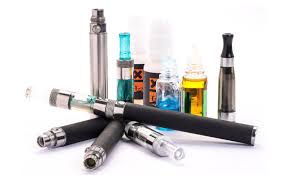This past summer, the US Food and Drug Administration created a turmoil amongst the vaping community by classifying e-cigarettes and e-juices as “tobacco products”. This means that all vaping products are now subject to an onerous and expensive pre-market testing process that will likely leave some companies panting for air. Not all businesses might be able to comply, and this is already changing the face of the vaping industry in a big way.
But how will e-cigarette businesses cope with these big changes? Will companies such as V2 Cigs and Blu e-Cigs be able to stay afloat or will they sink? And what about the vaping community? Could the crackdown potentially result in a stigmatization of vaping and less people using e-cigarettes as a quit-smoking method? There are definitely uncertain times ahead for the vaping industry, but there are also some probable positive outcomes. Let’s take a closer look.

What The Ruling Means For Businesses
While long-established or Big Tobacco-owned companies might be able to dodge the bullet in some ways and acquire an even larger part of the market after the ruling, privately-owned businesses such as V2 Cigs will have to submit a costly premarket tobacco application before being able to put their products up for sale. The price of this is expected to be somewhere between $330,000 and $2 million per product tested and will not represent a guarantee that the FDA will approve the products following the evaluation.
It’s easy to see that the ruling will likely drive several smaller businesses into financial difficulties. With such expenditure, not all of them will be able to afford to submit their whole product range for testing. This could result in the choice of vaping products significantly diminishing over the course of the next few years, and even lead to companies completely disappearing from the market. As a matter of fact, just this past September, the independent e-cigarette manufacturer NJOY filed for bankruptcy. Whether or not NJOY’s failure is a direct result of the FDA’s new regulation is unclear, but it is indeed something to give small business owners the heebie jeebies.
The cost of all this is not the only drag. Not only will the tobacco application be expensive, but it will also be extremely time-consuming. The FDA estimates that it will take an excess of 1,700 hours of paperwork per product to conduct the tests. The cost and time involved in this so-called vaping prohibition have led to the estimation that around 99% of the vaping products that are currently on the market will be banned from failure to comply in time in about two years.

What This Means for Consumers
It’s easy to foresee that the now-flourishing vaping product selection available on the market will likely dwindle down to just a few options for consumers in the years to come. Companies such as V2 Cigs and Mt Baker Vapor, the latter producing over twenty e-liquid flavors, may have to reduce their product range to their best sellers only — at least for the first few years while they absorb the cost of the testing.
In the end, the FDA’s intention to make things safer for consumers could, in fact, backfire on them and lead to the emergence of an e-cigarette black market. This may lead to home-made products that will not be as safe as the ones currently on the market and will affect in equal parts the vaping industry and the country’s economy — with both employment and tax loss in sight.
But it’s not all bad. Once the testing is over and everyone has readjusted, there will be much more solid science to back the positive effect that vaping has on health. This means there will be no more space for fallacious claims informing government policy.
Vapers will also be able to count on foreign exports, such as the Chinese brands Kangertech and Innokin, who will only be subjected to the new FDA regulations for selling their products in the US.
 Infographic courtesy of Electric Tobacconist
Infographic courtesy of Electric Tobacconist